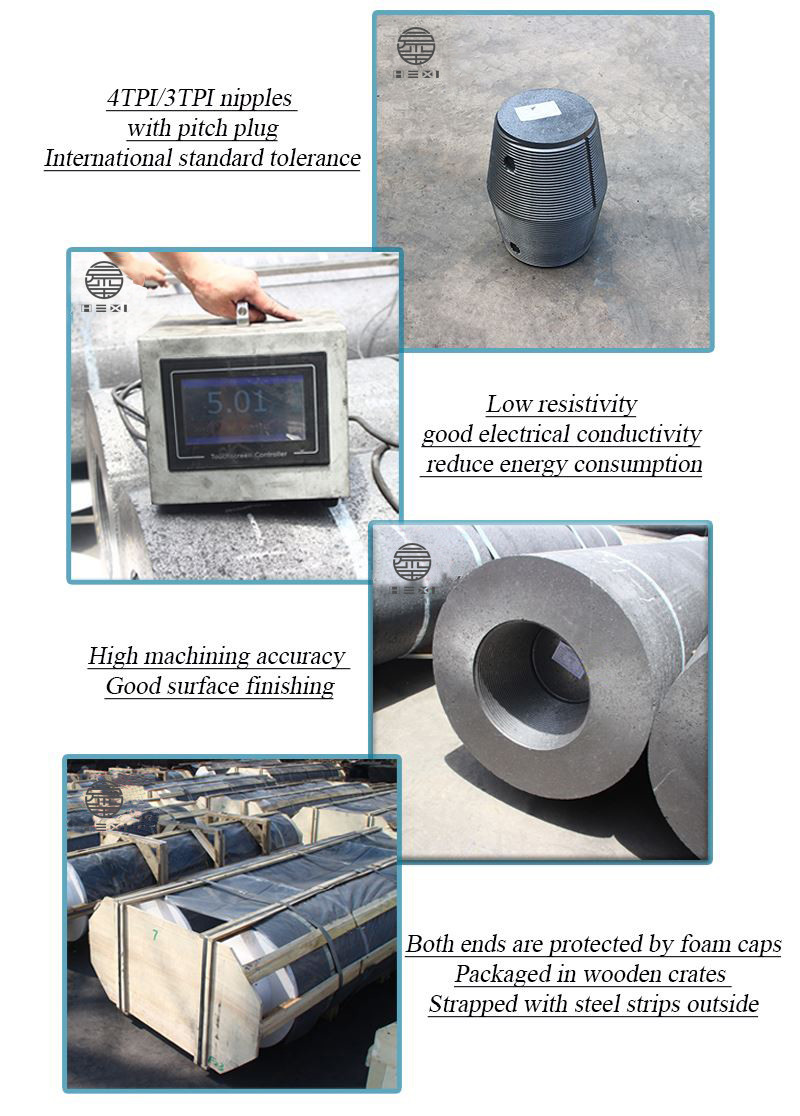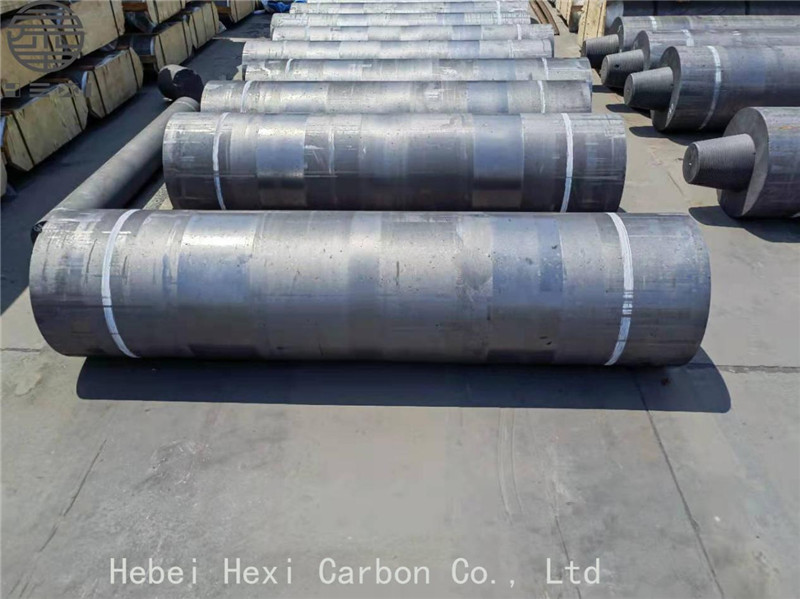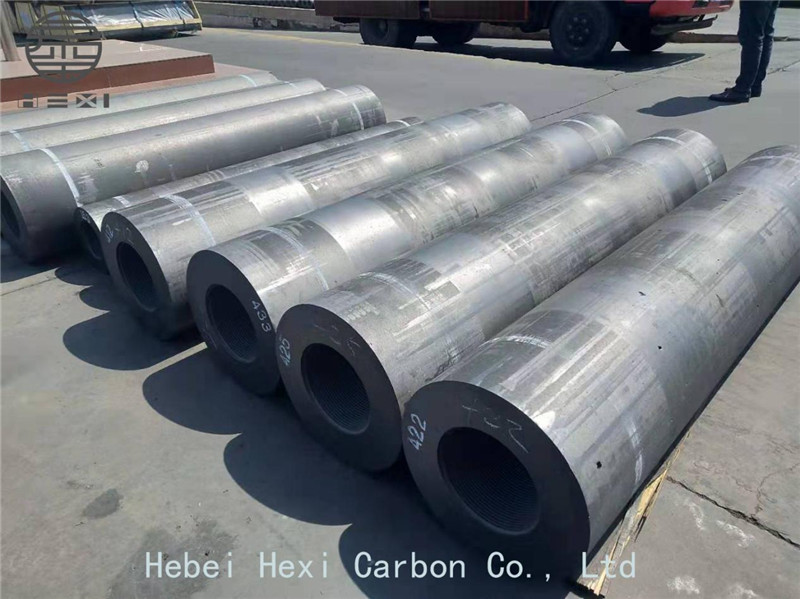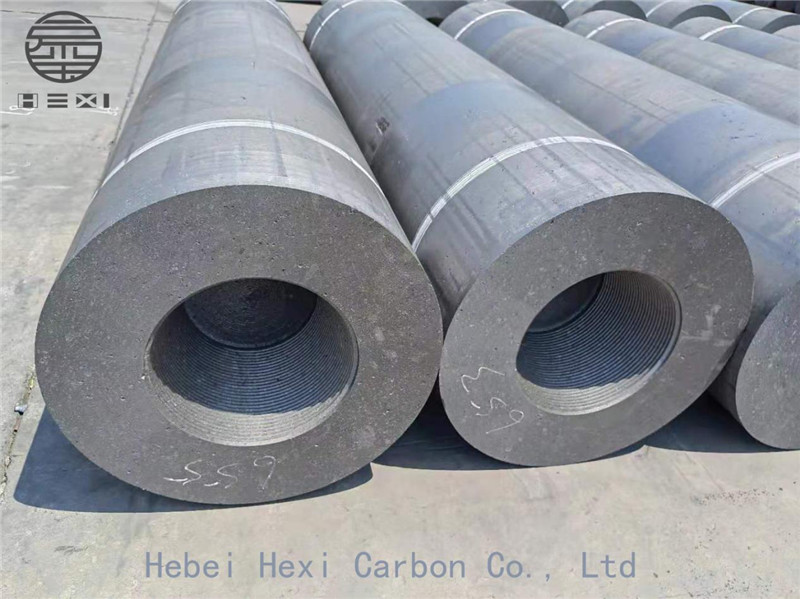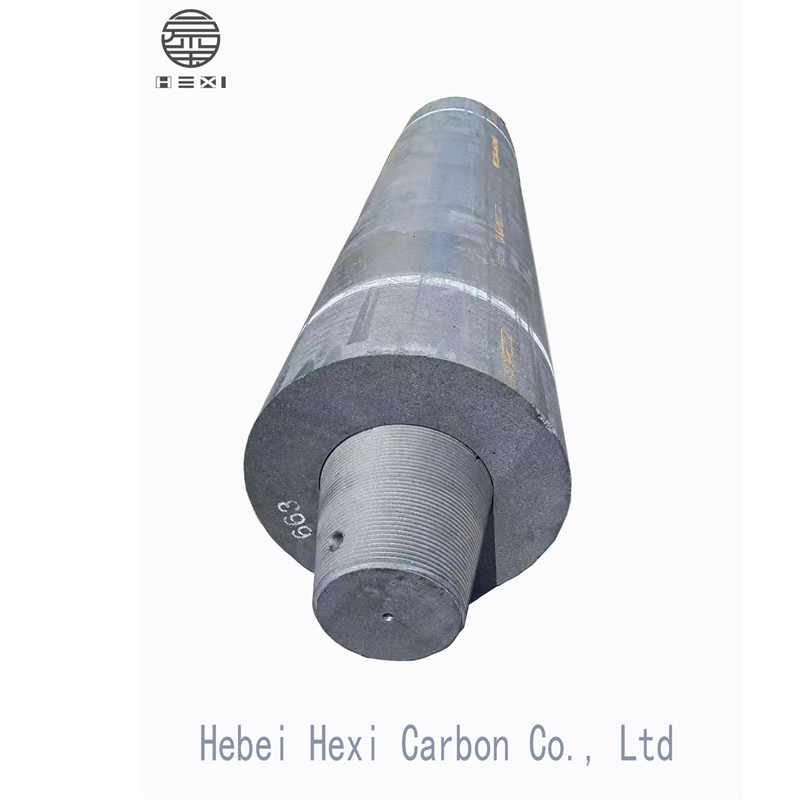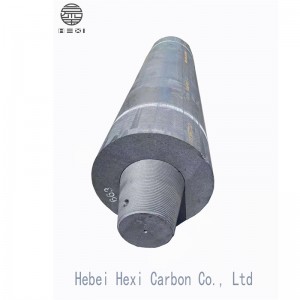UHP 500mm Graphite Electrode
| Comparison Technical Specification for UHP Graphite Electrode 20" | ||
| Electrode | ||
| Item | Unit | Supplier Spec |
| Typical Characteristics of Pole | ||
| Nominal Diameter | mm | 500 |
| Max Diameter | mm | 511 |
| Min Diameter | mm | 505 |
| Nominal Length | mm | 1800-2400 |
| Max Length | mm | 1900-2500 |
| Min Length | mm | 1700-2300 |
| Bulk Density | g/cm3 | 1.68-1.72 |
| transverse strength | MPa | ≥12.0 |
| Young' Modulus | GPa | ≤13.0 |
| Specific Resistance | µΩm | 4.5-5.6 |
| Maximum current density | KA/cm2 | 18-27 |
| Current Carrying Capacity | A | 38000-55000 |
| (C.T.E) | 10-6℃ | ≤1.2 |
| ash content | % | ≤0.2 |
| Typical Characteristics of Nipple (4TPI) | ||
| Bulk Density | g/cm3 | 1.78-1.84 |
| transverse strength | MPa | ≥22.0 |
| Young' Modulus | GPa | ≤18.0 |
| Specific Resistance | µΩm | 3.4~3.8 |
| (C.T.E) | 10-6℃ | ≤1.0 |
| ash content | % | ≤0.2 |
Graphite electrode is the only material that can withstand high temperatures up to 3000 degrees Celsius without being deformed and melted. So, they are chosen to make steel in electric arc furnaces (EAF) and ladle furnaces (LF).
How does it work in practice? While electrical current passing through the electrode, the electrode tips create an electric arc which generates extremely high heat and melts the steel into molten iron. High temperature resistance and thermal shock resistance makes it an indispensable material for steelmaking.
